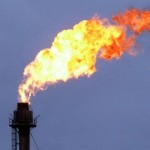 West Texas Intermediate crude headed for its biggest monthly decline in over two years, while Brent was on track for its sixth weekly loss, the longest losing streak since 2002, as OPEC raised its output to the highest in 14 months, according to a Bloomberg survey. Natural gas rose for a fourth day as colder weather across the eastern US is expected to induce locally high heating demand.
West Texas Intermediate crude headed for its biggest monthly decline in over two years, while Brent was on track for its sixth weekly loss, the longest losing streak since 2002, as OPEC raised its output to the highest in 14 months, according to a Bloomberg survey. Natural gas rose for a fourth day as colder weather across the eastern US is expected to induce locally high heating demand.
US crude for settlement in December fell 1.18% to $80.16 per barrel by 14:22 GMT, having shifted in a daily range of $81.27-$79.55. The US crude benchmark slid 1.3% on Thursday to $81.12, snapping two days of gains. Prices have fallen around 12% so far this month.
Meanwhile on the ICE, Brent for settlement in the same month slid 1.38% to $85.05 a barrel and held in a daily range of $86.25-$84.60. The contract dropped 1% on Thursday to $86.24 a barrel and is down 10% this month. Brent traded at a premium of $4.89 to its US counterpart, down from yesterdays settlement at $5.12.
The oil market reinforced its bearish stance after a Bloomberg survey showed that the Organization of the Petroleum Exporting Countries boosted its crude oil output in October, reflecting the group’s reluctance to lose market share and its ability to cope with lower prices.
OPEC pumped 30.974 million barrels of oil per day in October, Bloomberg reported, marking a 53 000-bpd increase from a month earlier, led by gains in Saudi Arabia, Iraq and Libya. September’s figure was revised down by 14 000 barrels per day to an average of 30.921 million barrels per day.
This fanned well-based speculations for a battle over market share, possibly trying to force part of US shale output out of the market. The Energy Information Administration reported on Wednesday that US crude production surged to 8.97 million barrels per day, the most in more than three decades, while US crude imports declined. On a monthly basis, production was at its highest in 28 years.
OPEC will hold a scheduled meeting in Vienna on November 27th where it will discuss its production policy. However, comments by OPEC secretary general Abdullah al-Badri reinforced speculations that the group will most likely stick to its previous production target of 30 million barrels per day.
US data, strong dollar
Oil prices were further pressured by a strong dollar which rallied after the Federal Reserve ended its Quantitative Easing program and said it could raise interest rates faster than expected, given that the labor market improves at an accelerated pace and prices retain stability.
Policy makers said the US labor market has strengthened enough to digest the end of Fed’s bond purchases, citing solid jobs growth and a lower unemployment rate since their last meeting in September. FOMC members said that interest rates could be hiked sooner than otherwise, if Fed’s goals of full employment and stable prices are reached faster than expected, but stated that the opposite scenario can occur as well.
The dollar was also lifted by the yen falling to the lowest in seven years against it after Bank of Japan unexpectedly boosted unprecedented stimulus. The central bank said it is targeting an 80 trillion yen ($726 billion) expansion in the monetary base, up from 60 to 70 trillion yen before.
The US dollar index, which measures the greenback’s performance against a basket of six major trading peers, rose to the highest in more than four years. The December contract gained 1.06% to 87.145 by 14:34 GMT, having earlier risen to 87.220, the highest since June 2010. The US currency gauge rose 0.23% on Thursday to 86.232.
Albeit strengthening the dollar, upbeat data from the US also bolstered oils longer-term demand prospects, keeping a floor under prices.
The US economy grew more than expected in the third quarter, while the four-week average number of Americans who filed for initial unemployment benefits in the week through October 25th slid to 281 000, the lowest level since may 2000.
Manufacturing activity in the Chicago region accelerated in October, with the respective PMI registering at 66.2, the highest since April 2011, sharply exceeding projections for a slowdown to 60.0 from the previous month’s 60.5.
Meanwhile, consumer confidence in October surged to the highest in seven years on the back of a solid labor market and declining gasoline prices. The relative Thomson Reuters/University of Michigan final index of sentiment rose to 86.9, the highest since July 2007, from 84.6 in the previous month. Analysts had projected a confirmation of the preliminary reading of 86.4.
Consumer spending in the US unexpectedly falling in September was a soft spot in this week’s data set, although the effect was muted due to the strong GDP numbers. Expenditures slid 0.2% last month after a 0.5% gain in August, defying analysts’ projections for a 0.1% increase. Personal income rose 0.2% from a month earlier trailing expectations for a 0.3% jump.
Natural gas
Natural gas rose for a fourth day and headed toward a sizable weekly gain amid speculations that cold weather over the eastern US will induce higher-than-average local heating demand.
On the New York Mercantile Exchange, natural gas for delivery in December surged by 1.62% to $3.889 per million British thermal units by 14:38 GMT. Prices ranged between $3.955 and $3.835. The contract rose for a third day on Thursday, having settled 1.03% higher at $3.827 per mBtu, and is up 5.1% so far this week, which could be the highest weekly gain since mid-February.
According to NatGasWeather.com, natural gas demand in the US over the next seven days will be moderate, and locally high, compared to normal, with a neutral weather trend for the seven days between November 7-13.
A cold Canadian weather system will track across the Midwest today into the eastern US and extend even into the Southeast. Lows over many of the affected regions will drop into the 30s and 20s on Saturday, bringing the first widespread freeze for the season. Many parts of the east-central US will see the strongest heating demand so far this season. Cooler weather and showers will dominate over the West Coast in the next days, as Pacific storms head inland.
Early next week, mild temperatures will return to the central and southern US. Fast moving Canadian weather systems will enter the Midwest and northern US late next week, probably carrying close to or below-freeze temperatures, NatGasWeather.com reported. However, their area of effect will be contained and the lower two thirds of the country will remain mild with highs in the 60s and 70s. Readings across the West Coast are expected to remain cooler.
Despite the cold snap to the East which pushed the market up this week, it will be hard for prices to go past $4.00 and retain gains, given next week’s forecasts for mild weather across most of the country. The cold front will need to push deep down south in order to reduce the next two weeks’ inventory builds, which have been racing ahead of the rapidly declining average net injections.





